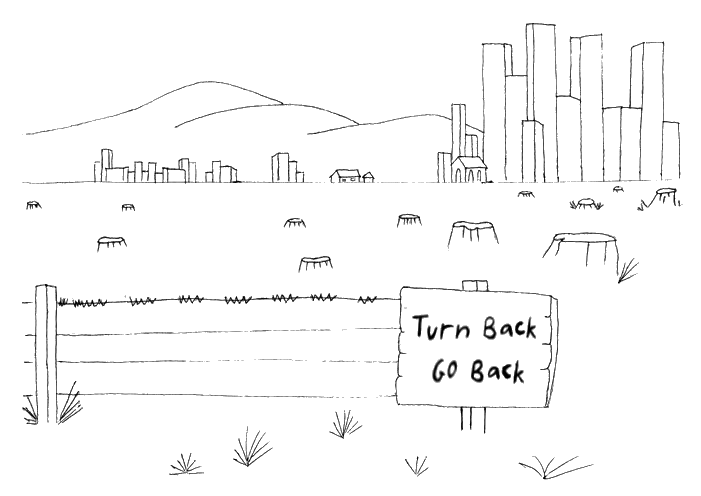

Environment
Landcare and the Murray Darling Basin > Saving the Murray > Life & Death of the BillabongUnderstanding Environmental Economics > How to be Green
How to be Green
‘The definitive guide on how each and every one of us
can do our bit for the maintenance of Planet Earth’
can do our bit for the maintenance of Planet Earth’
[John Button]
(Published in Milsons Point, New South Wales by
Random Century Hutchinson Australia Pty Ltd {An Arrow Book}, 1989)
Random Century Hutchinson Australia Pty Ltd {An Arrow Book}, 1989)
Introduction - Why Recycle?
i
Australia produces 10 million tonnes of domestic waste per year which is the equivalent of about 680 kilograms per person
- up to ten times our own bodyweight. When you consider that much of this waste is an unnecessary result of overpackaging
and that 80-90% could be re-used or recycled, the figures are alarming!
In Australia most of our household waste finds its way to the rubbish tip or landfill site.
In the past these landfill sites have been extremely successful at 'filling' swamps and small watercourses,
thus destroying the natural ecology of the area. Today councils and town planners are increasingly environmentally aware.
But no matter where a landfill site is
ii
established, it becomes a highly poisonous, volatile conglomeration of putrid wastes. Once bulldozed and covered with soil,
organic wastes rot, giving off natural gas, while heavy metals from batteries leach through the soil to poison the water table.
Other items such as plastics and car tyres will be intact a hundred years from now. Far from becoming useful,
the landfill site becomes unsafe to build on and certainly unsafe for growing any form of crop. As our yearly pile of rubbish increases,
the land available in which to bury it decreases.
One increasingly popular waste disposal method is incineration. In Switzerland, for example,
an incinerator boiler capable of turning 270 000 kg of municipal waste per day into 11 000 kg of steam per hour has been developed.
A montain of waste is reduced to a small pile of ash and energy is produced. Unfortunately however,
this system is not without its problems and once again they lie in the nature of waste.
When burned, plastics, pesticides, wood preservatives and the like release harmful dioxins into the atmosphere.
Other gaseous releases include acids and heavy metals.
The ash too is highly toxic and must be disposed of on a hazardous waste site.
Looking at a few alternatives,
it becomes apparent that there is no completely safe rubbish disposal method.
The Three 'R's'
The answer is clear; Reduce the amount of waste we generate and Re-use and Recycle what we can. Of course it sounds easier than it is. As victims of the disposable society we have superfluous products and packaging urged on us every day. We're almost encouraged to make rubbish by the size of the large 'wheelie' bins provided for domestic use, and by the frequent collection services which take it away as quickly as we make it.One wonders whether it would be a different story if we had to dispose of our household waste by our own means as was the case not so long ago.
Nobody even considered rubbish collection because household waste simply wasn't a problem.
Kitchen scraps went to the pig, the fowls or the compost heap.
iii
Newspapers fuelled the stove or were cut into neat squares for use in the outhouse.
Linen or cloth was never thrown away - sheets becoming pillow slips,
worn towels face washers and even smaller pieces of cloth were sewn into mats or used to patch existing clothes.
Packaging materials as we know them today, did not exist. Commodities such as flour,
sugar and tea were bought in bulk in large calico bags which, when empty were made into shirts, petticoats, pyjamas or pillow slips.
Jam and treacle came in seven pound tins which, it turn were used as canisters for the sugar, flour or tea.
Virtually nothing was wasted. Even a worn out saucepan would more likely be used to hold a potted plant than be thrown away.
Economics and Recycling
Recycling and economics are intrinsically linked. Does it save money to recycle? Most Australians today would answer 'no'. It is far easier and more comfortable to dispose of an old item and replace it with a new one. Our affluence can be seen by the amount we throw away. [1]Separation and Collection
iv
After consumption, materials are either disposed of or separated and collected.
Separation is the most important step in the recycling flow as it adds value to the materials and in effect gives them a market.
If not segregated, the waste is useless and must be disposed of at the expense of the waste producer.
As a general rule, if it is cheaper to separate and recover the waste than to dispose of it,
then separation and collection will be the chosen path. As it stands today, disposal costs are relatively low and hence do not encourage recycling schemes.
Separation, on the other hand is quite expensive as it is generally labour intensive.
Mechanical separation has met with mixed success and is only efficient when there are extremely high volumes of waste to be processed.
These methods are more fully discussed in Part B. Chapter 8. 'Separation & Collection'.
Transport
Compounding the expenses associated with separation and collection are the costs of transporting the collected material. Since sites where secondary materials may be used or processed are scarce and usually located in capital cities, the cost of transporting materials from country areas are often prohibitive. Freight charges too are discriminatory. Unprocessed materials are eligible for concessions, whereas secondary materials are classed as general freight.Necessity for Developing Recycling Methods
vii
Other societies have incorporated recycling into their daily lives to a far greater extent than we have. In India,
the Gujle Wallah (scavenger of scrap materials) and the Kabadi Wallah (collector of usable goods) are quite common occupations.
Almost eveything is reclaimed or re-used in what is virtually a wasteless society. Car tyres are cut up to make shoe soles;
cups and jugs are made from tin cans and every piece of vegetable peeling or food waste is prized as valuable feed for livestock.
Because of the high population and low average income, people simply can't afford to be wasteful.
Now the chances are that you're not about to go out and re-sole your shoes using an old car tyre or make a shirt out of a calico bag
(even if you could find one). It wouldn't be worth your while. But consider this - the garbage we throw out each week consists of:
33.9% organic matter, 32.4% paper (mainly from trees), 15.6% glass (from sand, limestone and soda ash), 7.9% metal (from natural mineral ore deposits),
4.3% plastics (petroleum byproducts), 4.9% miscellaneous.
All of these use energy, often vast amounts, in their production and between 80-90% of such domestic rubbish is recyclable.
The amount of waste we send to the tip each week could be reduced by 95% and even more if you shop wisely as discussed in Part B. Chapter 9.' Your Power as a Consumer'.
We are therefore throwing away our natural resources every time we wheel out the bin. How long can they hold out at this rate?…
Recycling for Efficiency
Recycling is both energy and resource efficient and there are many flow-on benefits. For example it takes 95% less energy to make an aluminium drink can from recycled aluminium than from raw materials. By recycling, the raw materials is saved, less pollution is created and there is no problem with disposing of the discarded can.[1]
The point that needs to be considered is not just is it financially viable to save but is it going to help us to survive in the future.
There is no point making more money now if it is going to cause us to forfeit having a future. This sort of mentality is shortsighted and plainly selfish;
you never know, we might even suffer the consequences of our own waste sooner than what we expect. (Christom, 11-08-01)

